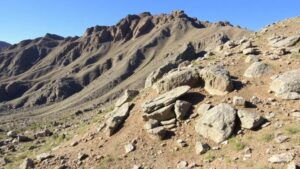Recognizing Rock Alteration Indicators of Copper-Rich Zones
Recognizing Rock Alteration Indicators of Copper-Rich Zones
The identification of copper-rich zones is crucial for mineral exploration and mining operations. Understanding the alteration indicators associated with these deposits can significantly enhance the effectiveness of geological surveys. This article explores the key rock alteration indicators that geologists should recognize when assessing potential copper-rich environments.
The Role of Hydrothermal Alteration
Hydrothermal alteration processes play a significant role in the formation of copper deposits. e alterations are initiated by the circulation of mineral-rich fluids, which interact with the surrounding rock, causing chemical and mineralogical changes. The primary types of hydrothermal alterations associated with copper mineralization include propylitic, phyllic, and advanced argillic alterations.
- Propylitic alteration: This involves the introduction of chlorite, epidote, and carbonates, often indicating the presence of nearby copper deposits.
- Phyllic alteration: Characterized by an increase in sericite and quartz, this alteration is typically found near larger copper bodies, particularly in porphyry deposits.
- Advanced argillic alteration: This type signifies a high degree of alteration involving the transformation of feldspar into clay minerals, such as illite and kaolinite, which can suggest proximity to copper mineralization.
Identifying Key Mineral Indicators
Also to recognizing alteration types, knowing the specific mineral indicators that accompany copper-rich zones is essential. Common minerals that indicate copper-rich environments include:
- Chalcopyrite: A primary copper mineral, often associated with high copper concentrations. Its bronze-yellow coloration is a distinguishing feature.
- Malachite: A secondary copper carbonate mineral that often forms in oxidation zones. Its vibrant green hue can be a clear indicator of copper presence.
- Azurite: Another secondary mineral, known for its deep blue color, indicating copper rich solutions interacting with carbonate rocks.
Geochemical Signatures
Geochemical analysis provides valuable insights into the mineralization processes involved. Elevated levels of copper, along with associated pathfinder elements, can signal proximity to productive copper zones. For example:
- Argentite: High silver content can often accompany copper-rich zones, suggesting potential economic benefits alongside copper extraction.
- Molybdenum: Elevated molybdenum levels may indicate association with porphyry copper systems, an important target for exploration.
Case Studies in Copper Exploration
Various case studies illustrate the effectiveness of recognizing rock alteration indicators in locating copper-rich zones. One notable example is the exploration conducted in the Andes mountain range, where propylitic and phyllic alterations were linked to large porphyry copper deposits.
Another significant instance is the discovery of the Oyu Tolgoi mine in Mongolia, where extensive geological mapping revealed advanced argillic alteration surrounding the copper deposits. The identification of these alteration zones led to the confirmation of massive copper-gold reserves.
Conclusion and Actionable Takeaways
Recognizing rock alteration indicators is vital for successful copper exploration. By understanding and identifying hydrothermal alterations, key mineral indicators, and geochemical signatures, geologists can effectively assess the potential for copper-rich zones. For practical application in the field:
- Conduct thorough geological mapping to identify alteration patterns.
- Use geochemical assays to target specific mineral associations.
- Incorporate remote sensing technologies to enhance surface exploration strategies.
Ultimately, a systematic approach to recognizing rock alteration indicators will significantly improve the chances of successful copper exploration and mining operations.



